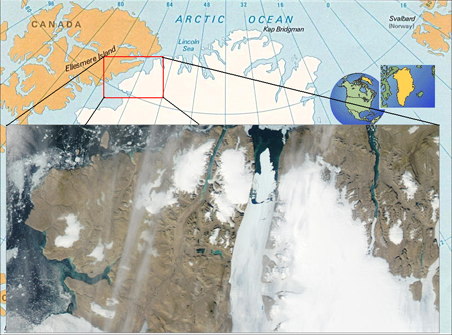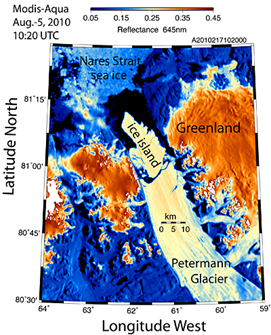Giant ice island calves from Greenland glacier
BBC
6 August 2010 A giant sheet of ice measuring 260 sq km (100 sq miles) has broken off a glacier in Greenland, according to researchers at a US university. The block of ice separated from the Petermann Glacier, on the north-west coast of Greenland. It is the largest Arctic iceberg to calve since 1962, said Prof Andreas Muenchow of the University of Delaware. The ice could become frozen in place over winter or escape into the waters between Greenland and Canada. If the iceberg moves south, it could interfere with shipping, Prof Muenchow said. Cracks in the Petermann Glacier had been observed last year and it was expected that an iceberg would calve from it soon. The glacier is 1,000 km (620 miles) south of the North Pole. A researcher at the Canadian Ice Service detected the calving from NASA satellite images taken early on Thursday, the professor said. The images showed that Petermann Glacier lost about one-quarter of its 70km-long (43-mile) floating ice shelf. There was enough fresh water locked up in the ice island to “keep all US public tap water flowing for 120 days,” said Prof Muenchow. …

